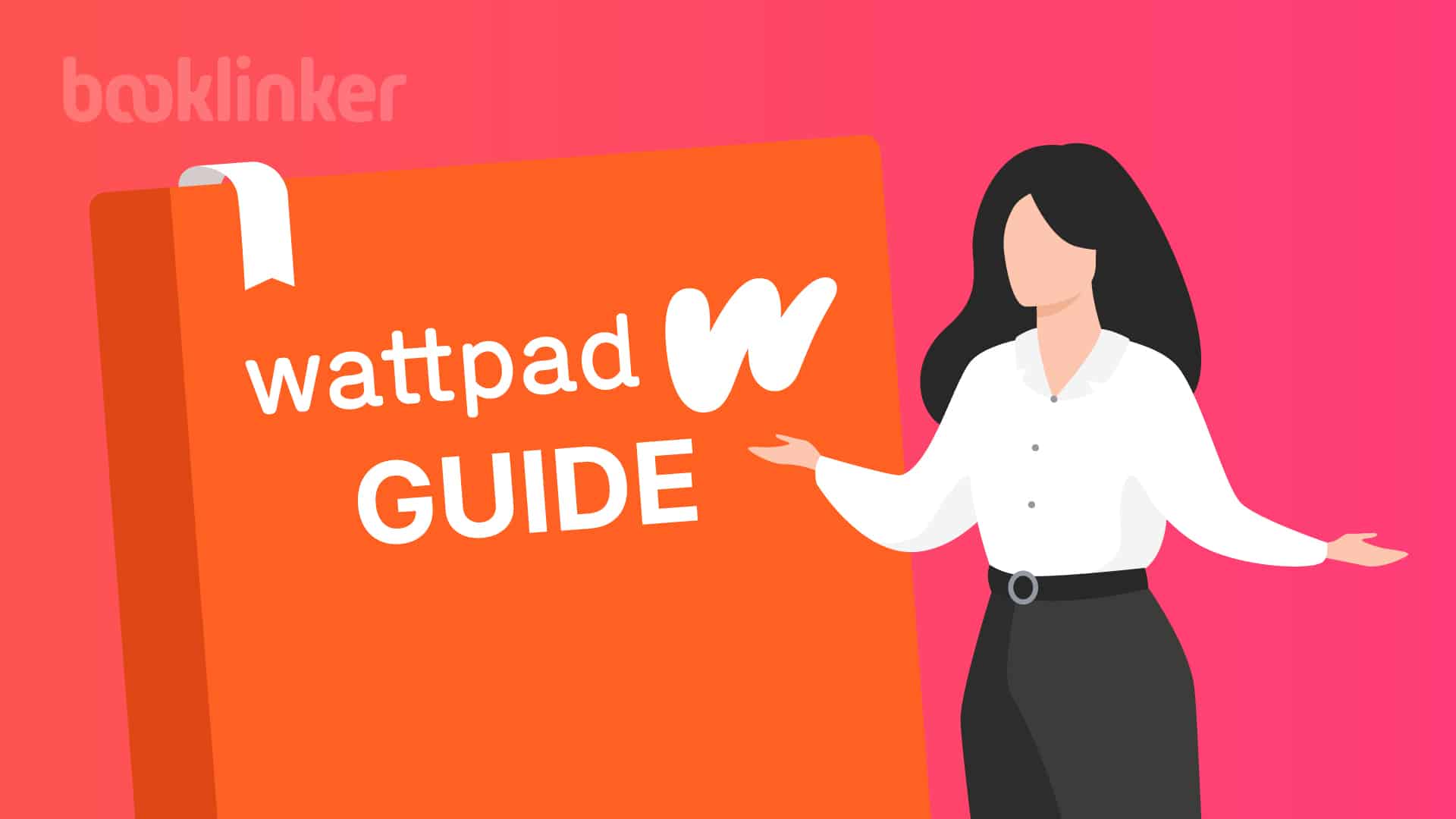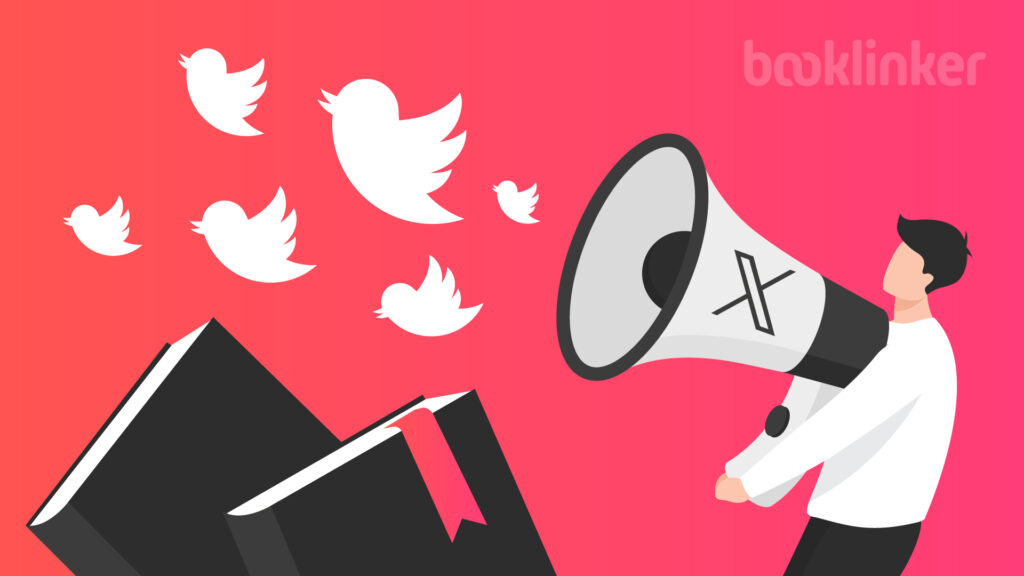
Building and retaining an audience is essential for any author’s success, whether self-published or traditionally published. Social media, particularly an established X (formerly Twitter, referred to as X going forward) account, remains a powerful tool for connecting with other authors and potential readers.
Recent statistics reveal that X is a vital platform for staying informed about news and current events, with 61.2% of users turning to it for this purpose. This aspect can be leveraged by authors to engage in relevant discussions and increase their visibility.
X’s user base is substantial, with around 245 million daily active users worldwide as of the latest data. This presents a significant opportunity for authors to reach a wide audience. Regarding global popularity, as of October 2023, X ranks as the 12th most popular social networking site worldwide.
Interestingly, 89% of people use X to discover new products, suggesting that authors can effectively use this platform to promote their books and other literary works. Additionally, incorporating video in X posts can boost engagement by up to 33%, offering another strategy for authors to enhance their presence.
When it comes to creating a compelling X profile, it’s noteworthy that the most popular thing U.S. adults mention in their bio is their job title or industry, with approximately 1 in 4 users including this information. This insight can guide authors in crafting a bio that immediately communicates who they are and what they do, thus attracting the right audience.
Unfortunately, the exact global ranking of X.com as of January 2024 is not readily available, but keeping in mind its significant user base and influence in the realm of news and current events, its relevance remains strong.
In order to create such an important post, we teamed up with Ruth L. Snyder, an author, writing coach, podcaster, and entrepreneur, who most recently released the book #LearnTwitterSpaces.
Before we get started on Twitter growth tactics, let’s first focus on building a killer profile that makes it clear to other users who you are and what you do.
Table of Contents
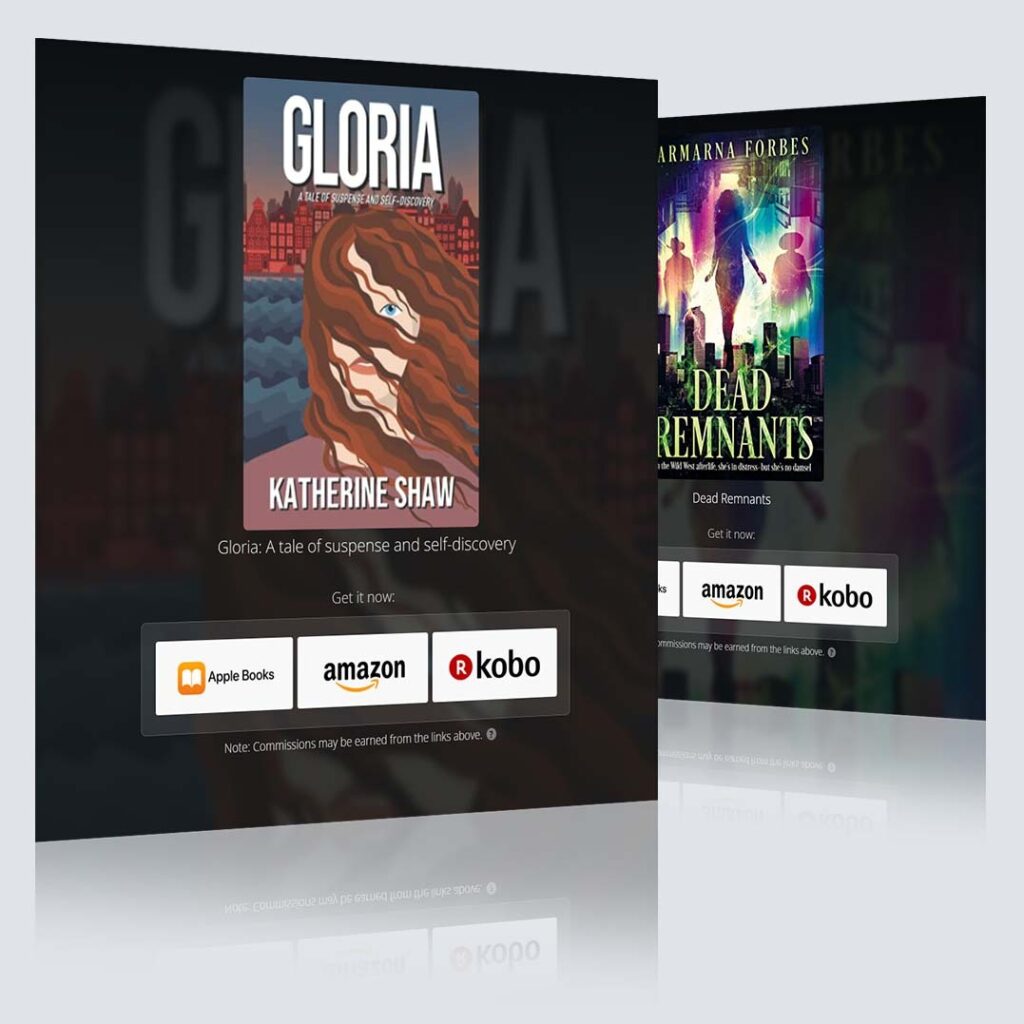
Free Universal Book Links
- Boost international sales by geotargeting readers
- Book store links update automatically based on availability
- Advanced marketing analytics
- Increase clicks with trusted links
Creating Your Twitter Profile
When you open an X account, your profile will be basic with some placeholders provided by X.
You need to update your profile as soon as possible to remove that “egghead” profile picture and let people know what you have to offer.
You can either access your X account on a computer or your mobile phone.
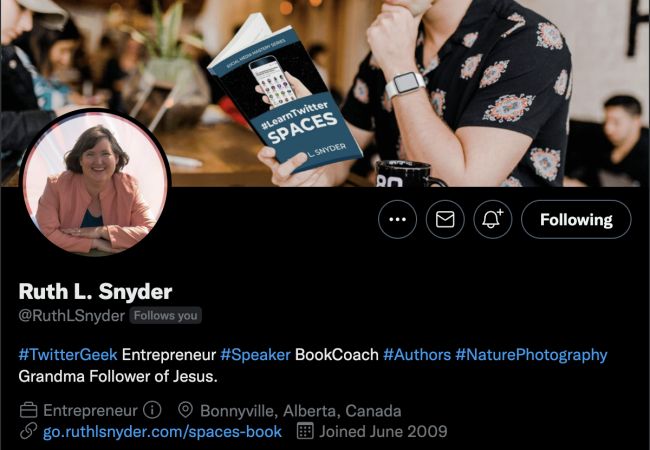
The main elements of a Twitter profile are
- Profile Photo
- Bio
- Header Image
- Profile Link
- Pinned Tweet
We’ll now go into detail about each one of these profile sections, and what to put here.
What Makes a Good Twitter Profile Picture?
A key element in crafting an appealing X presence for authors is selecting the right profile picture.
This isn’t just any photo—it’s a representation of your brand and your work. To make a lasting impact, consider investing in professional photography.
These images won’t just enhance your X profile; they’ll also add a touch of professionalism to your book covers, website, and other social media platforms.
Remember, X’s profile pictures have a maximum size of 400×400 pixels. This limitation means your photo should ideally be a close-up headshot where your face is clearly visible.
Why is this important?
People often feel more connected and inclined to trust someone whose face they can see. This human connection is crucial in the world of writing, where building a rapport with your readers can directly influence your success.
A great tool to help your headshot stand out is Canva.com. With Canva, you can design a photo that’s not just a picture but a statement of your author brand. Need some inspiration? Take a look at other authors on X or explore the templates on Canva for ideas.
To give your photo that extra edge, consider using Remove.bg. This tool cleverly removes the background from your photo, allowing for a more focused and personalized headshot.
Take inspiration from authors like Sam Rafoss, who opted for a striking black background to make her photo pop.

In the end, a well-chosen X profile photo can be a small but significant step in building a connection with your audience, making you not just an author, but a familiar face in their literary world.
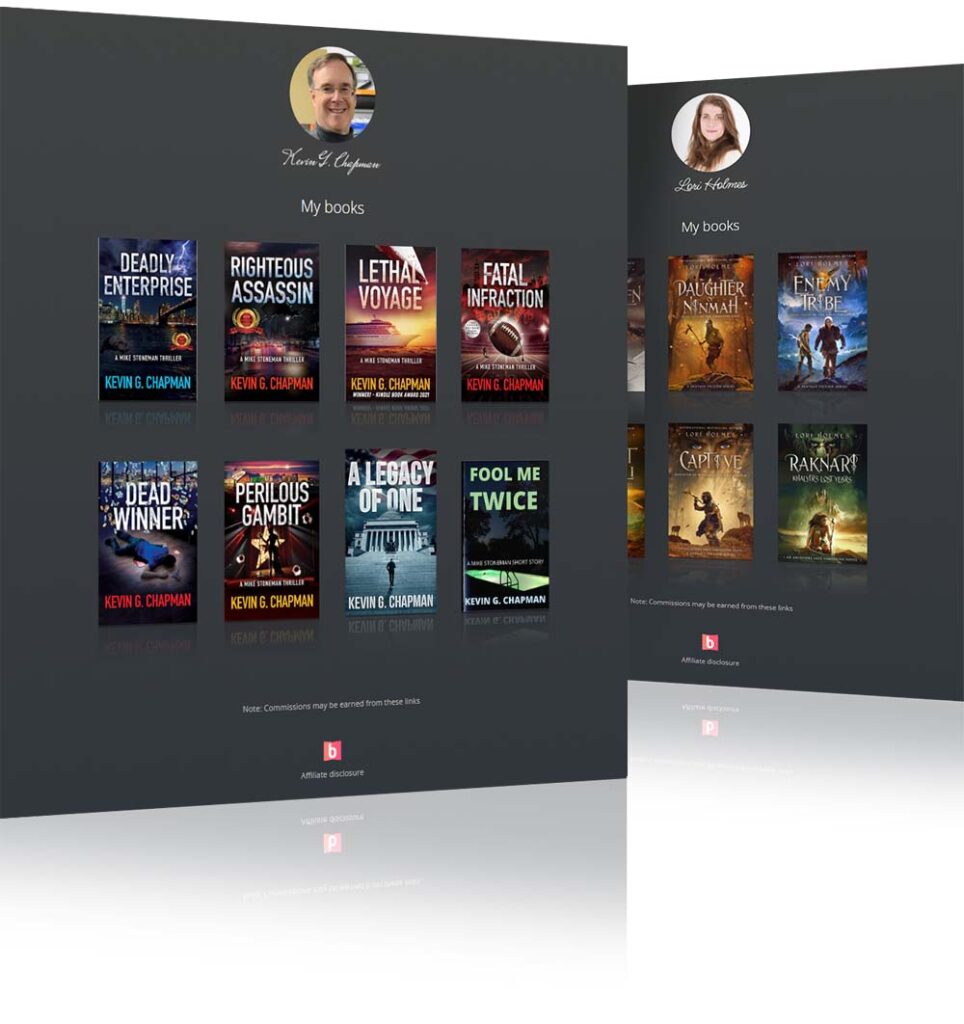
Introducing:
Booklinker Collections
One landing page for all your books. 100% free.
One link for easy sharing of your books across your backmatter, websites, emails, and social media.
Creating an X Banner (aka, Header) Image
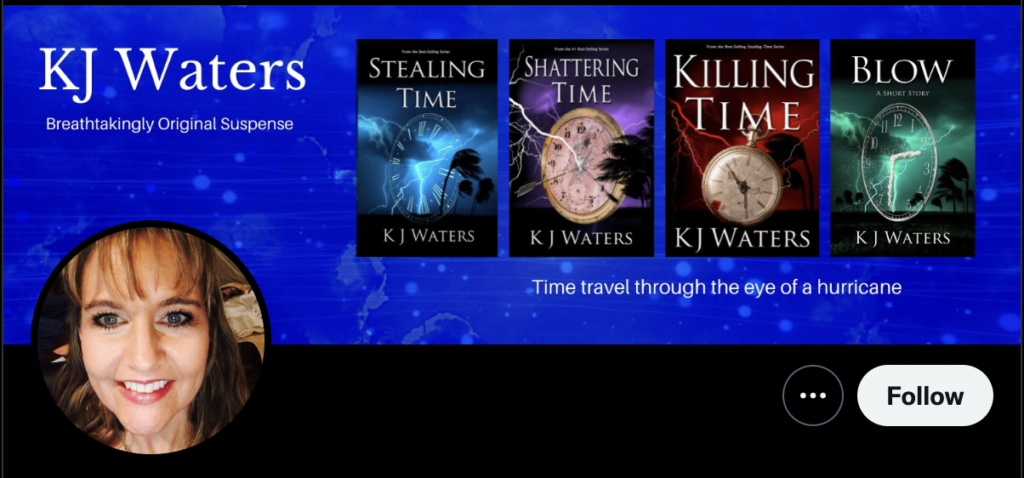
Below is an example of KJ Waters header image. You can see she uses it as a place to establish more credibility, list her titles, and help work toward a sale.
X header images serve as an additional promotional space. Be strategic with it. Think of this space as a free advertisement for your books, an event like a book launch or writing conference you’re speaking at, and/or your website.
You can change the header as often as you want.
X gives you a size of 1500 x 500 pixels for this section, so make sure you keep text and other important elements away from the edges as the image gets cropped automatically on different devices people use.
X users won’t see your header image unless they click on your profile. You can share an image of your latest book, highlight you and your tagline, or even tell peopleabout an upcoming eventlike an X Space.
Canva.com also has templates for X headers you can personalize and use. If you would rather have someone else create a header for you, try Fiverr.
Writing a Good Bio
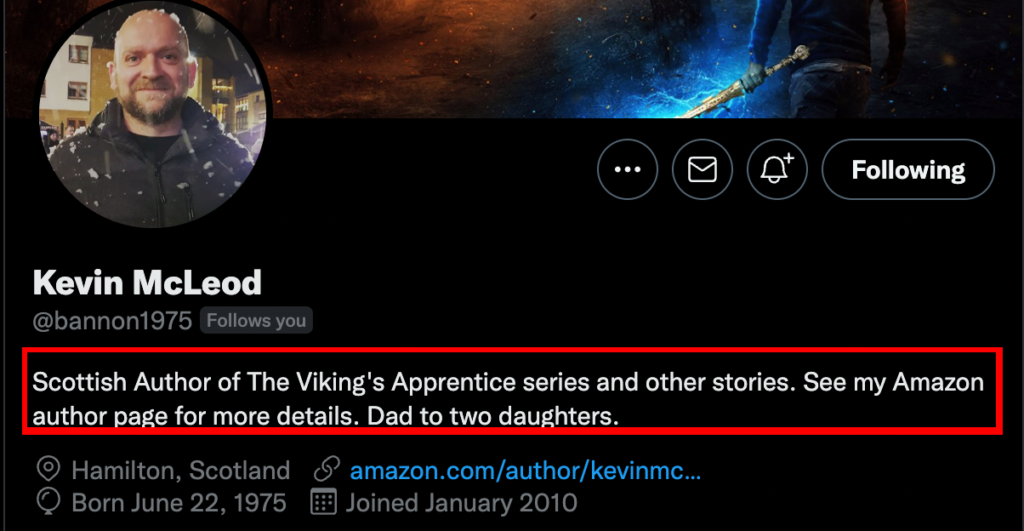
Let’s delve into another crucial element of your X presence: your bio. With a mere 160 characters at your disposal, every word counts.
This is where being concise, engaging, and clear about who you are and what you bring to the table becomes an art form.
To help you navigate this challenge, Lovelli Fuad has compiled a collection of 11 author bios.
These examples serve as a great starting point to inspire your own bio creation.
By studying these, you can get a feel for balancing personality with professionalism, all within the tight confines of your X bio character limit.
Remember, your bio is often your first impression on potential followers.
Make it count!
X Profile Links
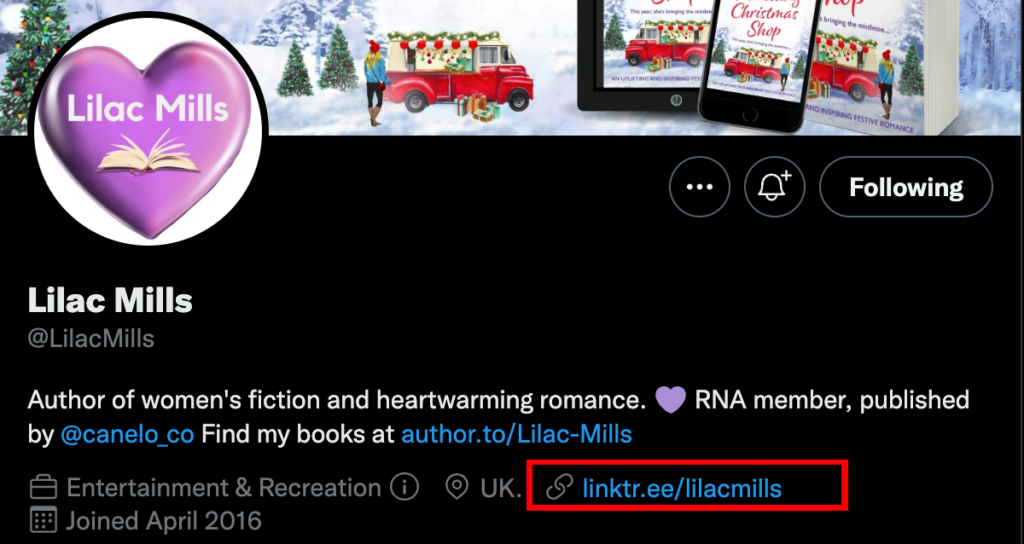
X gives its users one link to include in their profile in order to direct traffic.
You can either provide a link directly to your website or use a service like Linktree which provides one page for you to share your website, purchase links, and social media.
X now offers Premium and Premium Plus options, which allow for increased space. Learn more here.
Include a Booklinker link when referencing online bookstores, so you have a single link that takes readers around the world to the appropriate store for them to purchase your books and allows you to earn extra commissions.
Maximizing Your Pinned Post
Now, let’s talk about a promotional gem on X that you might not be fully utilizing yet: the pinned post.
This is the post that stays anchored at the top of your profile, making it the first thing people see when they visit your page.
Think of your pinned post as prime real estate. It’s an ideal spot to showcase what you’re most proud of or what you want to promote the most.
Whether it’s your latest book, an upcoming X Spaces event, or a memorable quote from your writing, this is the place to put it front and center. And don’t forget to include a Booklinker link for easy access!
Avoid the common mistake of pinning a random, old post that went viral once. Your pinned post should be current, relevant, and reflective of your brand as a writer.
This spot on your profile garners significant impressions, so ensure it represents the best of what you offer.
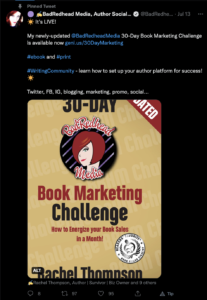
Twitter Content and Features
X works best when you see it as building a relationship—a two-way street where you listen and share, like a conversation.
You can share plain text, links, photos, GIFs, and videos for up to two minutes. (NOTE: X now allows you to share photos, GIFs, and videos all in ONE post!)
As authors, we need to connect with our readers.
We can ask questions, share helpful information and links, teach something, share book reviews of satisfied readers, give away samples, and share inspirational quotes (both from our own books as well as others).
We’ll cover some of the main features of X and how they should be used in the next sections.
Posts and Reposts
A post is simply what you create and share on X. All of your posts will appear in chronological order, from newest to oldest, on your X profile, following your Pinned post.
Commenting, or replying, allows you to respond to someone else’s post and engage in conversation with other X users.
Reposting causes a post to appear on your X feed again, making it more likely for people to see the information. You can repost other users’ posts, or you’re own.
Other X accounts will greatly appreciate you reposting their content, especially if you have a large following, in order to increase the post’s reach.
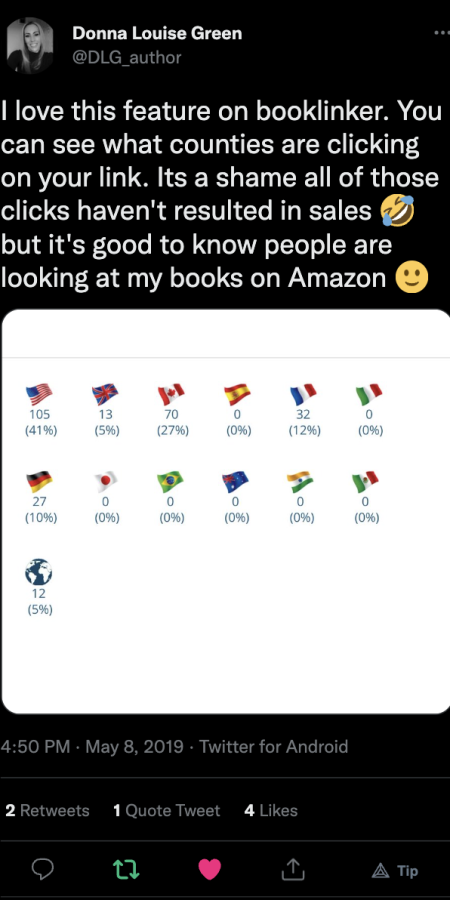
They may even return the favor with a repost in the future!
Liking (by clicking on the heart icon) a post lets people know you appreciate their post. This is used by the X algorithm to “rank” or “score” a post, potentially increasing its reach. All of a user’s liked posts will appear under their profile under the likes tab.
Sharing helps other people see a post. You can share in a DM (direct message) by using a bookmark, or by copying the specific post link and including it in your post.
Following and Followers
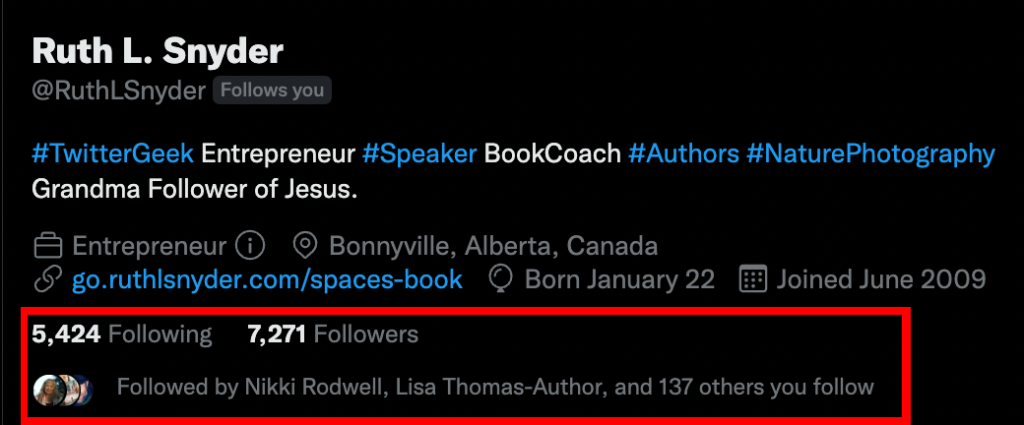
Following, and Followers, are one of the most fundamental aspects of X and are a pretty good way to measure how your account is doing.
Followers are people who choose to follow you. They are much more likely to see your content on their feed.
Following others is one of the best ways to grow your X account. However, you do not need to follow everyone who follows you. Your timeline will include posts shared by people you are following.
Authors should follow people who may be interested in reading their books.
Use the search feature to find other authors who write in similar genres. Follow some of their followers who comment about reading their books.
You may also find it helpful to follow publishers, agents, and others who will help you on your writing journey.
Hashtags on X
A hashtag is a pound sign (#) followed by any word(s) and is used to categorize posts. If you click on any hashtag, all the posts using that hashtag will show up.
Use hashtags to find helpful information (#askagent), connect with readers (#reader), share what you’re writing (#amwriting), let people know you’re an author, and connect with other authors (#author, #WritingCommunity).
You can include hashtags anywhere in your post, but often they are added at the end.
Check out the hashtags other authors in your genre are using, try them, and see which ones are most effective for your audience.
#MondayBlogs is a hugely popular hashtag created by Rachel Thompson (BadRedhead Media, LLC), where anyone can share their and others’ blog posts/newsletters – only on Mondays and not for book promo.
Social Audio on X Spaces
Social audio is like Zoom without video.
There are many different social audio apps available including Clubhouse, Wisdom, Fireside, Spotify, and X Spaces.
These apps equip you to connect with people all over the world in real time, have discussions, and build a community that trusts and buys from you.
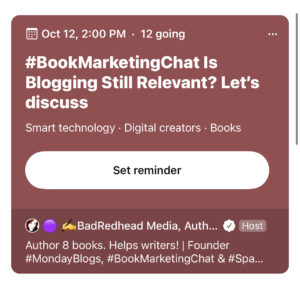
XSpaces is unique because it is part of the X app. (All the other social audio sites are standalone apps.)
Using XSpaces, I have increased my followers by 40% and made connections that are opening new opportunities for me.
In September 2023, two author conferences had me present workshops about social audio, where I made more money from my books than I did from the speaking fee.
There are many ways authors can use XSpaces. Here are some ideas you may want to try:
- Interview other authors who write in your genre, and collaborate on a collective boxed set.
- Host a weekly space where you discuss your journey of writing and publication.
- Have a virtual book launch
- Gather readers who want to participate in a virtual book study every week
- Host a writing critique or accountability group
- Teach the craft of writing
Your creativity is the only limit to what you can do with XSpaces.
XSpaces gives you access to a much larger audience for some of these activities than you could have at an in-person event, and the planning is minimal.
Who’s Doing it Right?
Imitating experts is often the best way to learn something. Here are some authors I recommend you follow and imitate on X.
They will help you learn how to build your audience and sell books.
Just remember that book marketing is more like a marathon than a sprint. Consistent effort over time will yield the best results.
Rachel Thompson
Rachel@RachelintheOC is an American author, survivor, and business owner (BadReadhead Media, LLC) who uses X to grow her community and sell her memoirs and books about branding and book marketing on both her personal and business accounts. Notice that Rachel has been on X since March 2009.
She has an attention-grabbing profile picture, an informative header picture, and pinned post threads.
She also offers a newsletter that helps build her email list. Rachel serves other authors with her monthly XSpaces (the first Wednesday of each month at 2 pm pst/5 pm est) for #BookMarketingChat.
Kevin McLeod
Kevin @bannon1975 is a Scottish author who joined X in January 2010.
His headshot clearly shows his face and is inviting.
The header picture raises curiosity about the fantasy stories he writes.
Kevin uses universal links that take people from different countries to the correct Amazon store to purchase his books.
When you scroll through his timeline, you’ll see that he interacts consistently with his audience and thanks them for their participation.
He also makes great use of visuals to capture interest.
Lilac Mills
Lilac @LilacMills is a romance and women’s fiction author from the UK. She joined Twitter in April 2016.
She has chosen to use her logo as her profile picture and features her latest book in her header picture.
Lilac also offers a newsletter to help grow her email audience, uses universal links, offers free books, and sells merchandise like clothing to grow her fan base.

Introducing:
Booklinker Collections
One landing page for all your books. 100% free.
One link for easy sharing of your books across your backmatter, websites, emails, and social media.
Frequently Asked Questions
How Can I Use X Effectively Without Wasting my Writing Time?
I suggest setting a certain amount of time aside for Twitter each day. My recommendation is 5-10 minutes up to three times a day.
Set a timer and stop when it rings. Twitter allows you to schedule your tweets.
I find writing my tweets ahead of time (in a Word or Google document) helps because then I can schedule most of my tweets for the week in about 30 minutes.
Spend time each day replying to other people’s tweets, sharing other people’s content, and sharing your own valuable content.
Twitter offers many tools. Try one at a time and see what works for you and your audience.
How Do I Know Which Posts are Most Effective?
X provides detailed analytics for each tweet.
If you click on the bar graph icon on the far right at the bottom of a tweet, you will see how many impressions, engagements, detail expands, new followers, profile visits, and link clicks the tweet provided.
Try different types of tweets and content and then let the analytics guide you in deciding future content.
How Often Should I Post on X?
There are a wide range of answers to this question. Some people say you should not post more than a particular number of times daily.
Others say you can never post too much.
However, all marketers agree you should focus on quality over quantity, and you must provide a variety of content.
No one likes a person who only focuses on themselves.
It’s the same on X.
Aim to only share one post about your book out of every five to ten posts.
Is X Good for Authors?
X is one of the best social media tools for authors to use, given the enormous community of writers it fosters, and the recent popularity of X Spaces (audio spaces).
Using X correctly can be an incredible tool for building a following and generating organic book sales.
How do Writers Grow on X?
Writers grow on X mainly by putting out engaging, interesting content.
Posting about trending topics, or using popular hashtags is essential as well.
Don’t be afraid to engage and follow as many like-minded authors and readers as you can find.
What is the Best Social Media for Authors?
There isn’t exactly a “best” social media for authors, as every platform has strengths and weaknesses.
Ideally, authors build out a following on as many platforms as possible, such as Instagram and Tiktok.
As you can see, X and XSpaces are powerful tools for authors when used consistently and strategically. Make sure your profile is professional and inviting.
Be prepared to put in work for several months, inviting people to your community, before you expect results.
Imitate other authors in your genre who are getting the types of results you want to see.
Experiment, have fun, and share a variety of content, paying attention to analytics and adjusting accordingly.
Next Steps:
- Open your account. You will need a handle, aka @yourname, and you’re limited to 15 characters total (no spaces).
- As Rachel Thompson with @BadRedheadMedia suggests, use your name (or some iteration of it) plus writer or author, e.g., RThompsonAuthor, which sets you up for future books with the same account. If you have a company, use that for your handle. You get 50 spaces for your name, so you have more room to share your name and perhaps an emoji.
- Create your bio using the tips above.
- Create a banner (or header) graphic using the tips above. More here. The ideal image size for your X header photo is 1500px by 500px.
- Take a look around. Follow your favorite writers and publications, attend a few audio spaces, comment, share. That’s how we grow.

Introducing:
Booklinker Collections
One landing page for all your books. 100% free.
One link for easy sharing of your books across your backmatter, websites, emails, and social media.
Author
-
Ruth L. Snyder is an author, speaker, writing coach, podcaster, and entrepreneur. She enjoys helping entrepreneurs write, publish, and profit from their books. Ruth figures out ways to work smarter, not harder, and then shares those tips with her clients. One of her clients says, “Ruth makes the seemingly impossible feel attainable with her easy-to-follow steps. Ruth has shared her expertise on platforms like Thrive Global, Women in Publishing, Authority Magazine, The Write Coach, The Global Interview, Christian Book Academy, and The Digital Download.
https://ruthlsnyder.com



